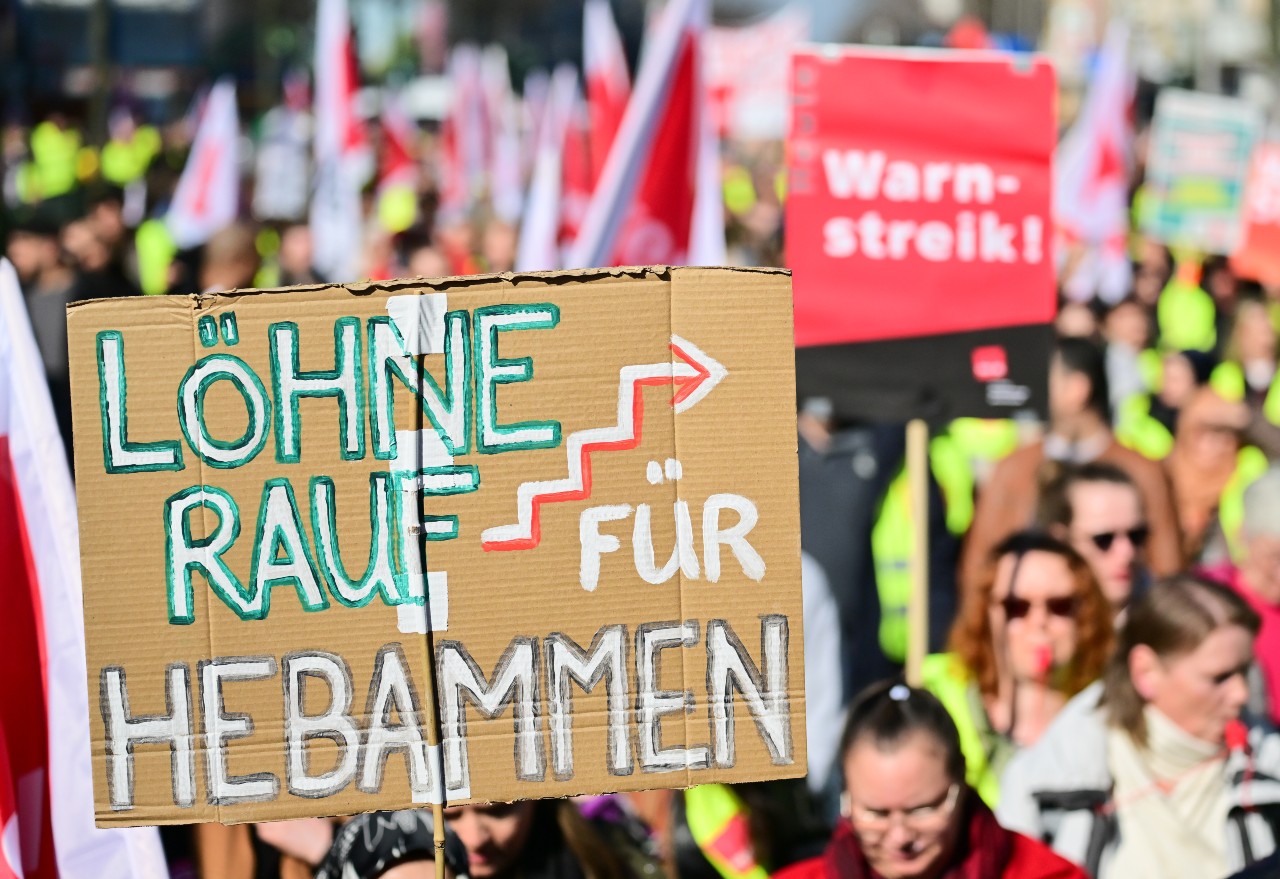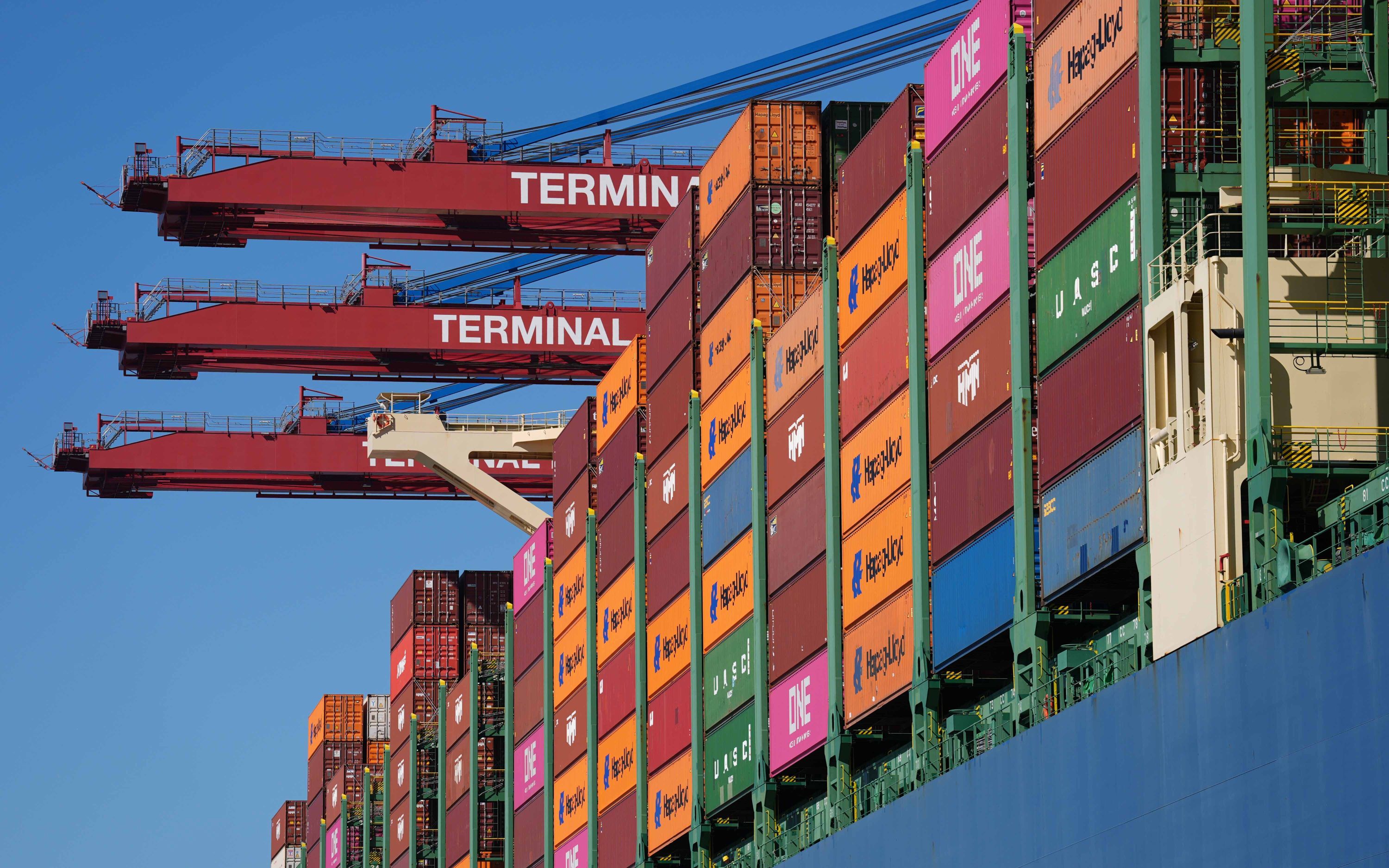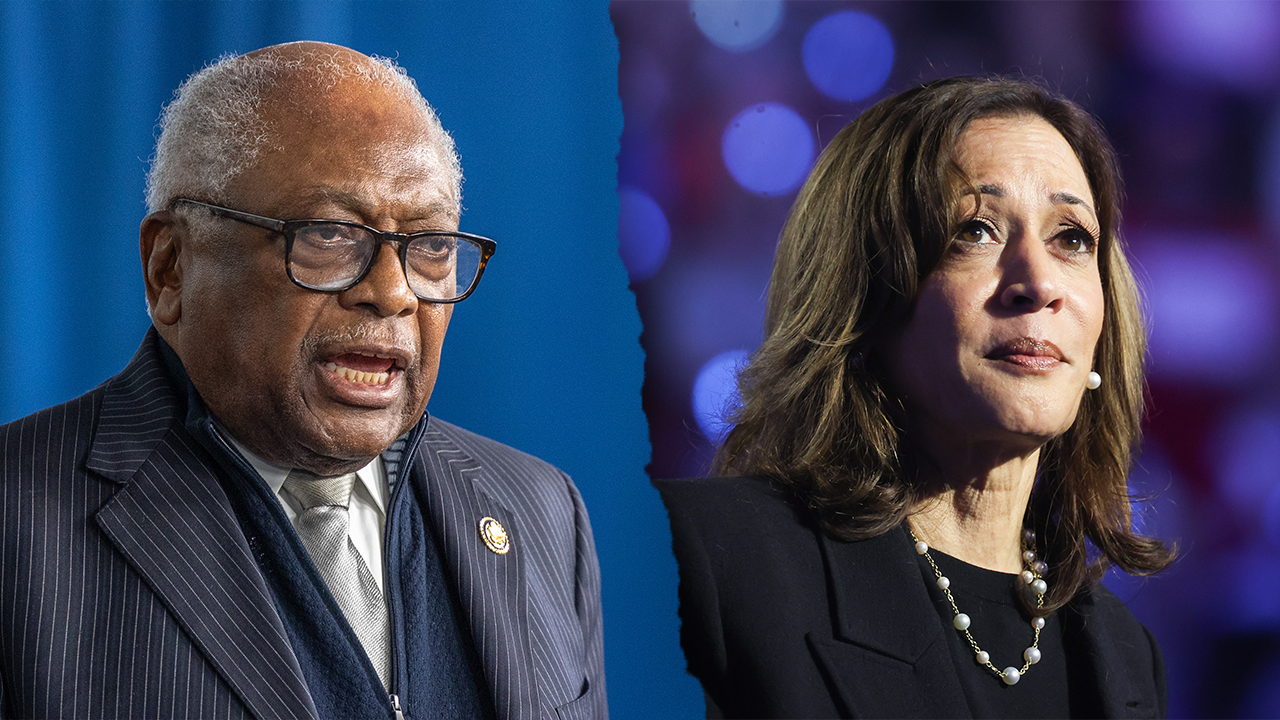Government officials have finally struck a deal with the unions for around 2.6 million public sector workers in Germany. Does this mean strikes are over for now? Here’s what you need to know.
It took four rounds of negotiations and a third-party mediation process to get there, but on Sunday, a deal was finally reached for Germany’s public sector employees.
After months of strikes affecting local transport, clinics, waste collection and daycare centres, government officials and the unions said they would sign off on a deal for a significant pay increase for workers.
The agreement will come as a relief to those who have suffered through several rounds of industrial action since talks began in January. It also means that the likely incoming coalition of the CDU/CSU and SPD will have one less conflict to worry about.
Despite the successful resolution, however, there have been some bitter pills to swallow. Here are five facts to know about the pay deal and the prospect of future strikes.
1. Workers are getting a pay rise – and more holiday
On the face of it, the new deal looks like a significant pay rise for workers – though only half of it will come into effect this year.
From April 1st, public sector employees will all see a three percent increase in their pay packets, with a minimum rise of €110 per month. This will be followed by a further 2.8 percent increase in May next year, bringing the total increase up to 5.8 percent.
Bonuses for irregular shift work and rotating shifts will go up from €40 to €100 and from €130 to €200 respectively. Meanwhile, the 13th month’s salary – a kind of Christmas bonus scheme – will also increase from 2026.
Advertisement
As an alternative to the increased bonus, employees who don’t work in hospitals will have the chance to opt for three days of extra holiday instead. From 2027, all workers will be given an extra day of annual leave as standard.
In a move towards more flexible hours, employees will also be given the chance to bump their hours up to 42 hours per week from 2026 in order to boost their earnings.
2. Huge number of employees are affected
Unlike some recent deals in the postal sector, for example, the public sector deal will impact a huge range of workers in an array of different sectors.
These include employees in administrative offices, as well as daycare centres and schools, in local public transport, in waste disposal companies, in sewage treatment plants, swimming pools, nursing homes, and at airports. In total, the agreement covers around 2.6 million workers across Germany.
Demonstrators walk in a long procession along Zeppelinstraße during collective bargaining for the public sector. Photo: picture alliance/dpa | Jens Kalaene
Normally, public sector deals like this one are automatically extended to civil servants at a later date. Since a new government is set to enter office in the coming weeks, however, this decision will be handled by the incoming administration.
READ ALSO: Where Germany’s future coalition still disagrees
Since the agreement only covers federal and local government employees, those who work for state governments aren’t included. That includes teachers, for example, who are set to thrash out their own pay deal in autumn.
3. Strikes will be over until 2027
Following more than two months of turmoil, the good news is that Germany is set to see around two years of peace in the public sector.
The 27-month agreement has been backdated to the start of January this year, meaning it will expire in March 2027. That means that there won’t be any more warning strikes in care homes, nurseries, hospitals and leisure centres to worry about until then.
Advertisement
That said, not every public sector worker is covered by the pay deal – and there are some tough negotiations still ongoing as we speak. In Berlin, for example, Verdi is still locked in a fierce battle with BVG over pay for local transport workers. This conflict was recently referred to an arbitration committee, with a hiatus on strikes until April 10th.
If a deal isn’t reached on the back of mediation, however, the union could call unlimited strikes, leading to days or even weeks of transport chaos in Berlin.
READ ALSO: What happens next after Berlin’s two-day public transport strike?
It’s also worth noting that state employees like teachers, regional police, judges and university lecturers aren’t covered by the recent deal. This group of workers will need to come to the negotiating table in autumn this year, which could result in further strikes action at schools and universities, for example.
Advertisement
4. Neither side is ecstatic about the deal
After weeks of wrangling, both sides scored some wins in the final agreement – and both had to agree to some painful compromises.
Services union Verdi, which had been pushing for an eight percent pay rise and at least €350 more per month, had to scale down its ambitions significantly. Speaking to the press on Sunday, union boss Frank Werneke described the agreement as “a difficult result in difficult times”.
According to Werner, the total pay increases amount to around €200 extra per month for a refuse collector and around €230 extra for a daycare worker.

A participant holds up a sign reading ‘Wages up for midwives’ during a Verdi warning strike by nursing staff at the Charité Campus Virchow-Klinikum and other Berlin clinics. Photo: picture alliance/dpa | Sebastian Gollnow
The union also had little success negotiating more flexible working hours for workers – one of its key demands. Verdi argues that, in order to plug the skills shortage in the public sector, working schedules must be loosened up to make these jobs more attractive.
On the employer side, local and federal governments will now have to find billions in extra funding for staff costs during difficult times. According to Interior Minster Nancy Faeser (SPD), the wage hikes have taken the treasury “to the limit” of what can be afforded.
In addition, they will have to contend will the possibility of staff deciding to take more holiday days in future. This could lead to problems at times of growing worker shortages in the public sector.
Advertisement
5. Local governments could struggle to foot the bill
According to Faeser, the new wage deal is set to cost the federal government around €1.94 billion over the 27-month period. While budgets are tight, this is expected to be a manageable amount.
For cash-strapped local districts, however, the situation looks to be a lot more challenging. Karin Welge, who led negotiations for local governments, estimates the additional wage costs at around €10 billion per year.
According to Welge, the extra financial burden comes at a time when some municipalities are seeing tax revenues drop due to the economic downturn. Some are so indebted that they are unable to carry out maintenance on schools and leisure facilities, she said.
READ ALSO: No ‘spring revival’ for Germany as unemployment rises
The district administrator of Meißen, Saxony, Ralf Hänsel (CDU), has also warned of the impact the deal could have on cities and municipalities. Districts in Germany have the highest funding deficit since reunification, he said, adding that Municipal Employers’ Association of Saxony had voted against the agreement but must implement it anyway.
With reporting by DPA


















 (2025 Updated)
(2025 Updated)

Discussion about this post